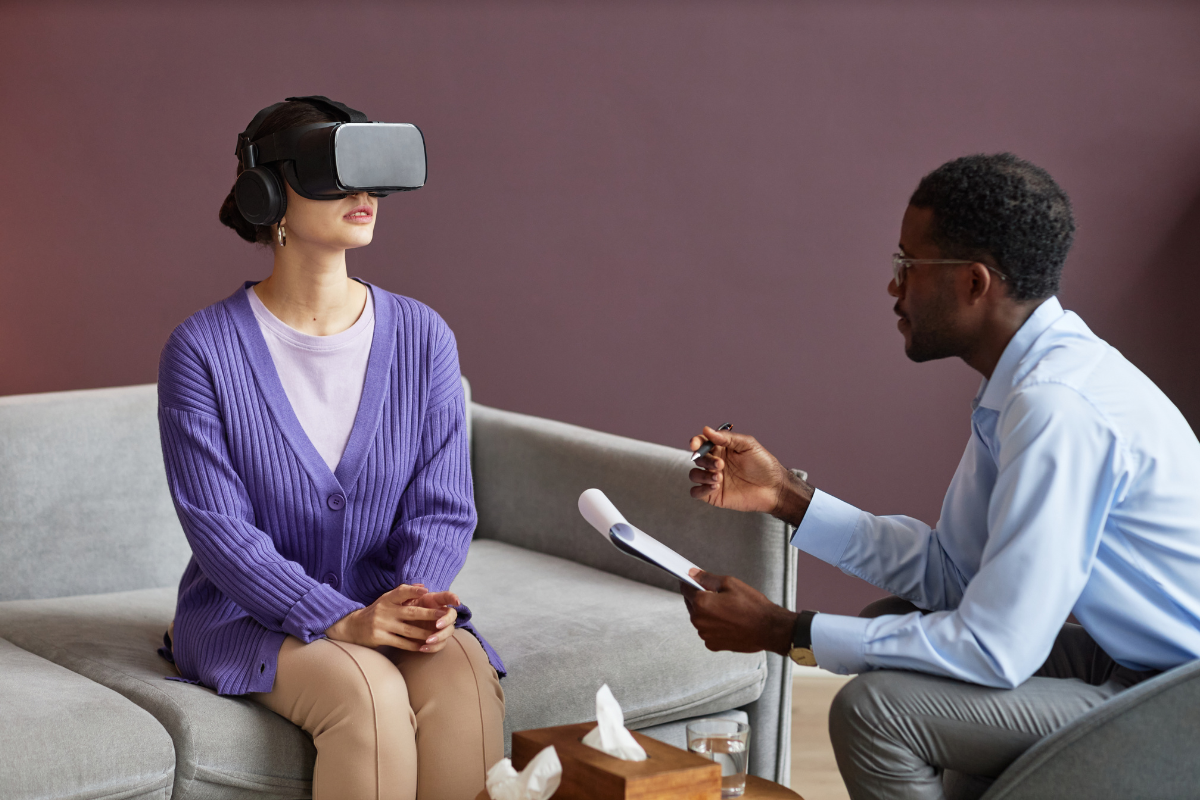In a generation where innovation and technology play an important role in all fields — entertainment, leisure, medical practices, and many others, one cannot deny that virtual reality has become something so powerful and helpful.
Attention deficit hyperactivity disorder, commonly known as ADHD, is a common psychiatric disorder that makes an individual with such a problem socially inactive, have planning problems, and inability to complete a task in a given time.
Medical experts and professionals do have some recent proposals that use virtual reality to aid and help individuals with ADHD during their consultations and routine treatments.
Experts say that VR or Virtual Reality can make real-life environment experiences for people with ADHD to help in their stimulus and training control.
Professional studies and proposals do impose that VR can be a good treatment because it can accommodate the patient’s needs and can be flexible to whatever treatment strategy is needed.
As mentioned above, recent studies about how effective it can be have been in many articles and blogs.
Also, doctors and other professionals are now considering the use of VR or virtual reality in their treatments.
However, there are some cases where burnout during ADHD happens and experts say VR can be a good option for it.
Table of Contents
ToggleBits And Pieces On ADHD — Facts And Realities
There are tons of studies that say that virtual reality can be of great help in treating ADHD patients.

In fact, a review of the effects of VR treatment on ADHD can be easily read through various online blogs and articles.
All this can only mean one thing, medical experts are now considering the use of VR in treating such patients with ADHD. Now, what is ADHD?
Attention Deficit Hyperactivity Disorder or ADHD is a medical disorder that usually starts in childhood.
Most schools are now having issues regarding the number of kids having problems or with ADHD tendencies.
Based on the figures given by the World Health Organization (WHO), more than 7% of the world’s population have ADHD.
Moreover, 70% of this starts at adolescence or adulthood which results from dysfunctional relations and lack of care within their circle.
People or kids with ADHD are always restless, they have the tendency to do nothing for almost all hours and then want to finish the task within a short period of time, are impatient, and have this uncommon verbiage.
The importance of the treatment is to give a better quality of life, improved psychosocial abilities, and increased control.
In the medical field, VRs are used in phobias, anxiety, cognitive therapy, other tests, and pain treatments.
Now, mind experts and doctors do see something more useful to using VRs as a therapy technique for patients with ADHD, especially in the children and adolescent age group.
Virtual reality can be used as a distraction which can create a reality for the patient to be more controlled and have fun while being treated for his impulsive tendencies.
Exploring The Therapeutic Potential Of Virtual Reality In ADHD Treatment
As the realm of technology continues to evolve, its applications in various fields become increasingly apparent.
In the realm of mental health, particularly for individuals with Attention Deficit Hyperactivity Disorder (ADHD), virtual reality (VR) emerges as a promising tool.
This section delves deeper into the therapeutic potential of VR in ADHD treatment, shedding light on its applications and benefits.
ADHD, a prevalent psychiatric disorder affecting both children and adults, poses challenges in social interactions, planning, and task completion.
Recognizing the need for innovative solutions, medical experts propose leveraging VR to enhance consultations and routine treatments.
VR, by simulating real-life environments, offers tailored experiences to aid in stimulus control and training for individuals with ADHD.
Its flexibility allows for the adaptation of treatment strategies to cater to individual patient needs.
Recent studies underscore the efficacy of VR in ADHD treatment, with numerous articles and blogs highlighting its positive impact.

Medical professionals increasingly consider integrating VR into their therapeutic approaches, especially in cases of ADHD-related burnout.
This shift signifies a growing acknowledgment of VR as a valuable adjunctive treatment for ADHD.
Traditionally used in phobia treatment, anxiety management, cognitive therapy, and pain treatment, VR now captures the attention of mind experts and doctors as a potential therapy technique for ADHD patients, particularly in the children and adolescent age group.
By providing a controlled and enjoyable distraction, VR can assist in managing impulsive tendencies during treatment sessions.
In summary, research increasingly supports VR as a reliable therapy technique for ADHD patients, emphasizing its role as a complementary tool alongside other established ADHD therapies.
The exploration of VR’s therapeutic potential signifies a promising step forward in addressing the multifaceted challenges posed by ADHD.
Conclusion
Virtual Reality or VR might be one of the great innovations that can provide a better gaming and viewing experience, but it can also be a great treatment option for people with ADHD.
VRs can help patients to hold their attention or divert their attention to another world that will help them to develop a higher level of stimulation and hold their interest in one thing.
Second, they will be able to do simulations of the tasks that they want to do by doing trial and error provided by the system of VRs.
Third, VRs do have this reward system that can help people with ADHD have that satisfaction over something that they certainly love to do.
In short, all these researches about VR’s effectiveness in treating ADHD patients are now backed up with proof that it is a reliable therapy technique.
Keep in mind that VRs can only be a part of the treatment, not the treatment itself. It must be used as a treatment tool together with other ADHD therapies.











